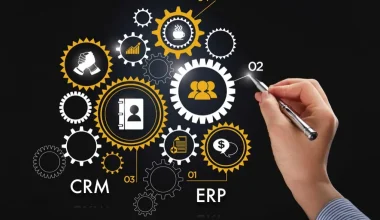People must work in safe, friendly, and effective situations to perform at their highest levels. Facilities management systems are involved in every aspect of what happens to people inside buildings and on the grounds. It should be comfortable, effective, and sustainable where people work, play, learn, and live.
What are Facilities Management Systems?
Facility management is an organizational function that unifies people, places, and processes within the physical environment to enhance individual well-being and fundamental company efficiency. Infrastructure, real estate, and building and grounds functionality, comfort, safety, and efficiency are all supported by facilities management systems.
Effective facilities management systems will benefit your company’s bottom line by improving the short-and long-term value of property, buildings, and equipment.
A career in facilities management (FM) is committed to helping people. It guarantees the built environment, which includes the structures in which we live and work and the infrastructure around them, is functional, comfortable, safe, sustainable, and effective.
What is Facilities Management Systems Software?
Facilities management systems software is a program used to oversee, construct, and operate structures and their functions. With facilities management system software, managers can track energy use, costs, maintenance status, and the management and exploitation of space, resources, and assets.
Facilities management systems software functions similarly to customer service software in that it tracks issues finds solutions and records outcomes. Increasing efficiency also lowers the expense of manually tracking this information.
Organizations may manage their complete repair and maintenance program using facilities management systems software, which helps them save time and money by successfully managing their buildings, assets, and inhabitants.
Best Facilities Management Systems
Scaling up facility operations is a challenging endeavor. There are too many elements to keep track of, from work orders to equipment monitoring, scheduling, and more, utilizing spreadsheets or other antiquated systems.
Following our comprehensive guide, you can learn how to use the best facilities management systems.
The Top 6 Best Facility Management Software
We have identified six facilities management systems that we can confidently recommend after doing an in-depth study and testing. By reading the evaluations listed below, you can select the best choice for your particular circumstance.
- Hippo CMMS – Best for Preventive and Corrective Equipment and Maintenance Management.
- FMX – The best automatic repair process software.
- eMaint CMMS – The Best for Maintenance Scheduling
- TheWorxHub: Top Facility Management Platform for Senior Living.
- Common Areas – Ideal for Property Managers in Real Estate.
- UpKeep – Effective for Mobile-First Work Order Management.
#1. Hippo CMMS – Best for Preventive and Corrective Equipment and Maintenance Management.
By maximizing the value of capital assets, Hippo CMMS, a computerized maintenance management system, aids businesses in increasing efficiency. Simply said, this program automates inventory administration, work order management, preventative maintenance, and equipment maintenance for companies in a variety of industries.
Hippo stands out from the crowd compared to other tools in this category thanks to its ability to monitor assets and machinery for early-warning problems.
#2. Fmx – The Best Automatic Repair Process Software.
Another market pioneer in the area of facility management software is FMX. FMX’s reputation for facilities management speaks for itself—more than 400,000 users depend on it. Restaurants, property management, manufacturing firms, zoos, schools, and businesses in every industry use it.
FMX stands out for its capacity to automate workflows and cut maintenance expenses compared to competing products in this field.
#3. eMaint CMMS -The Best for Effective Maintenance Planning
Another computerized maintenance management system is eMaint CMMS, renowned for its enterprise asset management capabilities. More than 50,000 users worldwide trust the software.
You have more control over your facilities management procedures thanks to eMaint. The program makes it easier to track the work of several staff who are spread across several distinct facility sites.
#4. Theworxhub: Top Facility Management Platform for Senior Living.
TheWorxHub, a specialized solution in the facilities management software area, is offered by Dude Solutions. This program was created in the cloud with senior living institutions in mind.
This industry faces a fair share of difficulties regarding facility maintenance. The organization must look after its residents in addition to HVAC systems, boilers, energy sources, and conventional facility assets. TheWorxHub resolves everything under one roof.
#5. Common Areas – Ideal for Property Managers in Real Estate.
Another sector-specific option for facility management is Common Areas. The program was created especially for managing real estate properties.
Common areas help both large and small activities in the real estate sector. This covers single-family homes, commercial property, multi-family homes, and other types of real estate.
By connecting your residents, staff, partners, and processes, the program helps you lower risks and streamline your work orders. It aids in the elimination of manual, wasteful, and scale-impossible processes like spreadsheets.
Common Areas serves as a single platform for all your property management requirements, which is one of the best things about using it for facility management. It can also be used for:
- Facilities audits
- Work order administration
- Management of space
- Reports on operations
- Management of incidents
- Operational administration
- Vendor sourcing
- Inventory management
- Project management
You can monitor your properties with the help of reports and data-driven insights. Equipment, office assets, and tenant needs are all taken care of by Common Areas
#6. Upkeep – Effective for Mobile-First Work Order Management.
For facilities management, more than 200,000 professionals rely on UpKeep. Well-known companies like McDonald’s, Marriott, Yamaha, Siemens, and organizations from various industries all have faith in it.
In a market where facilities workers are constantly on the go, UpKeep excels as a mobile-first solution.
To demonstrate how versatile UpKeep is, let’s take a deeper look at some of its best features, advantages, and functionalities:
- Attach manuals and checklists to work orders.
- Keep count of the parts and effort consumed for each work order
- Receive requests with images of problems, and convert them into work orders automatically.
- Establish a service calendar for maintenance
- Create automated processes to do away with manual work order allocations.
Restaurants, property managers, hospitality companies, farms and agricultural facilities, manufacturing businesses, and more use UpKeep.
Facilities Management Systems Cost
Facilities management systems cost is based on mix/max estimations for various software systems. You can use $3,000 as the absolute minimum and $50,000 as the maximum as a general guideline for size, placing most software investments roughly in the middle at $29,000.
There is no “one size fits all” strategy regarding facilities management systems. Additionally, there is no solitary facilities management systems cost.
Facilities management systems are a service that heavily depends on the features of a place and the requirements of a client. Before knowing every detail, it is impossible to determine the facilities management systems cost for a specific location. How large is the area? How many workers or tenants are there? What are the client’s financial and goal objectives? Before getting into the specifics of facilities management system cost, each concern needs to be addressed.
Life-cycle costs are another significant factor that must be taken into account.
Read Also: PRODUCT MANAGEMENT TOOLS: Top Free & Paid Options
The initial expense of facilities management is one of the main issues we hear from new clients. However, many of these issues don’t consider the budget and long-term objectives. Although facilities management focuses on the daily operations of space, it’s equally crucial that any facilities management plan also considers long-term objectives. Effective facility management can only be accomplished in this way. The three components of life-cycle facilities management systems cost are as follows:
- Initial expenses: purchase, installation, and capital investment costs.
- Future Expenses: operating, upkeep, finance, and capital replacement costs for energy
- Costs associated with future salvage or disposal during the course of a project, a product, or a facility
In other words, the ideal facilities management system cost will cover the initial purchase price and the ongoing costs associated with maintaining these services. The estimated life of the current and planned systems anticipated maintenance and repair, and other factors will all be taken into consideration by CTG Real Estate Services to find the optimum pricing for your budget over time instead of only looking at the lowest initial cost.
These factors will be considered, and we will ensure that we are developing the ideal strategy for that customer’s needs and budget before we present any facilities management systems cost estimates to a client.
What Are the Different Types of Facilities Management?
There are many specialties and types of facilities management to take into account, which include:
- Planning for asset management and life cycle
- Business Continuity and Preparedness for Emergencies
- Engagement, effectiveness, and well-being of employees
- Environmentalism And Sustainability
- Cooperation Among Departments
- Project and relocation management
- Real estate and property management.
- Floorplan and Space Utilization
- Smart Office Technology and Planning
- Employing Leadership and Strategy
What Is the Difference Between CMMS and CAFM?
Computer-Aided Facility Management (CAFM) and Computerized Maintenance Management System (CMMS) are abbreviations.
Its scope and purpose are the significant differences between CAFM and CMMS software. Using real estate is one of the many areas of facility management that can be automated using CAFM. On the other hand, CMMS software, which is frequently included in the CAFM package, contains features geared toward the administration of maintenance operations.
What are the 3 Main Tasks of Facilities Management?
The secure, hygienic, and correct maintenance of the facility are the three main tasks of facilities management.
What Are the Main Principles of Facility Management?
The following are the main principles of facility management. They include:
- Proficiency in the field.
- Lean management
- high-quality services powered by dependability.
- The efficiency of resources with a focus on sustainability.
- Efficient service provision and procurement.
- Quick dynamic responses that are cycle-oriented.
What Is the Difference Between Facilities Management and Property Management?
The difference between facilities management and property management is that property management is primarily concerned with property ownership. In contrast, facilities management is concerned with how services are provided. Property management is concentrated on the structures and the actual ownership. In contrast, facilities management is focused on people and services (the buying and selling of that property or renting and leasing).
Conclusion
Facilities management entails a wide range of disciplines and services. Its work guarantees that a company’s buildings, assets, and systems are functional, comfortable, safe, and efficient.
Related Articles
- Reviews of Top 27 Maintenance Management Software In 2023
- Work Order: Simple Procedure/ Steps for Creating a Work Order
- ONLINE MANAGEMENT COURSES: Best Online Management Courses
- STRAIGHT LINE DEPRECIATION: How to Calculate Straight Line Depreciation
- MAINTENANCE MANAGEMENT SYSTEMS: Definition, Types and Best Software






